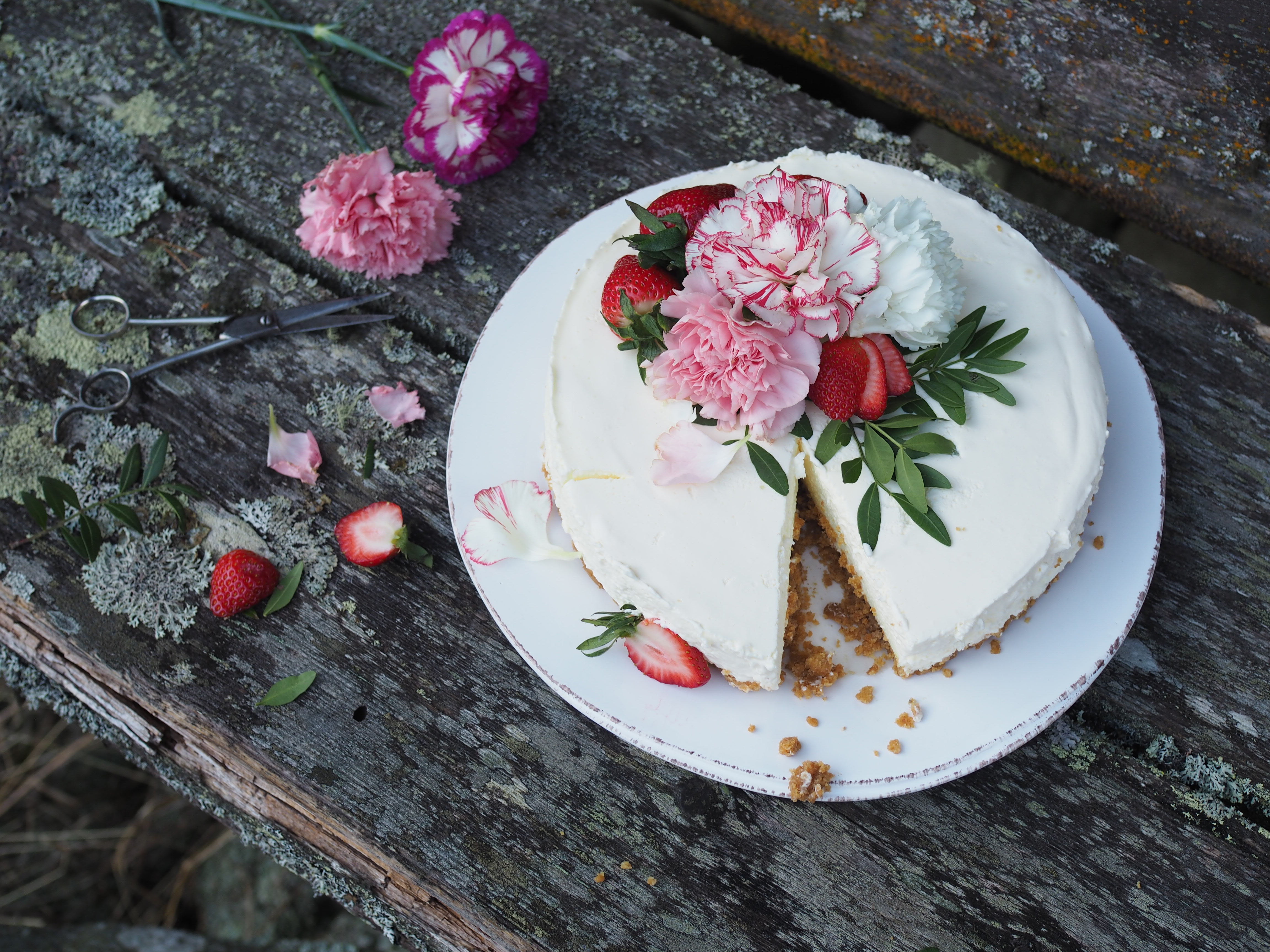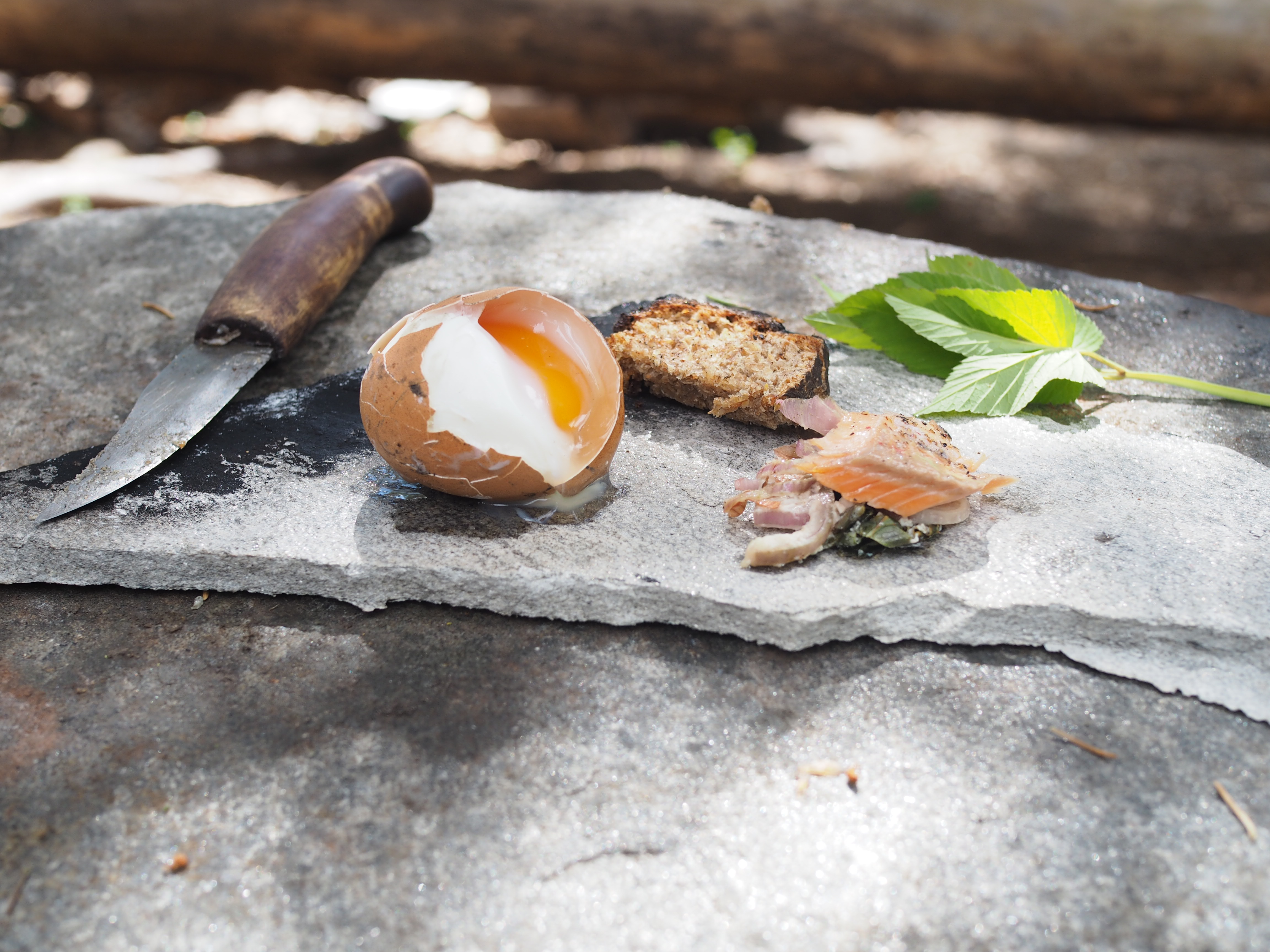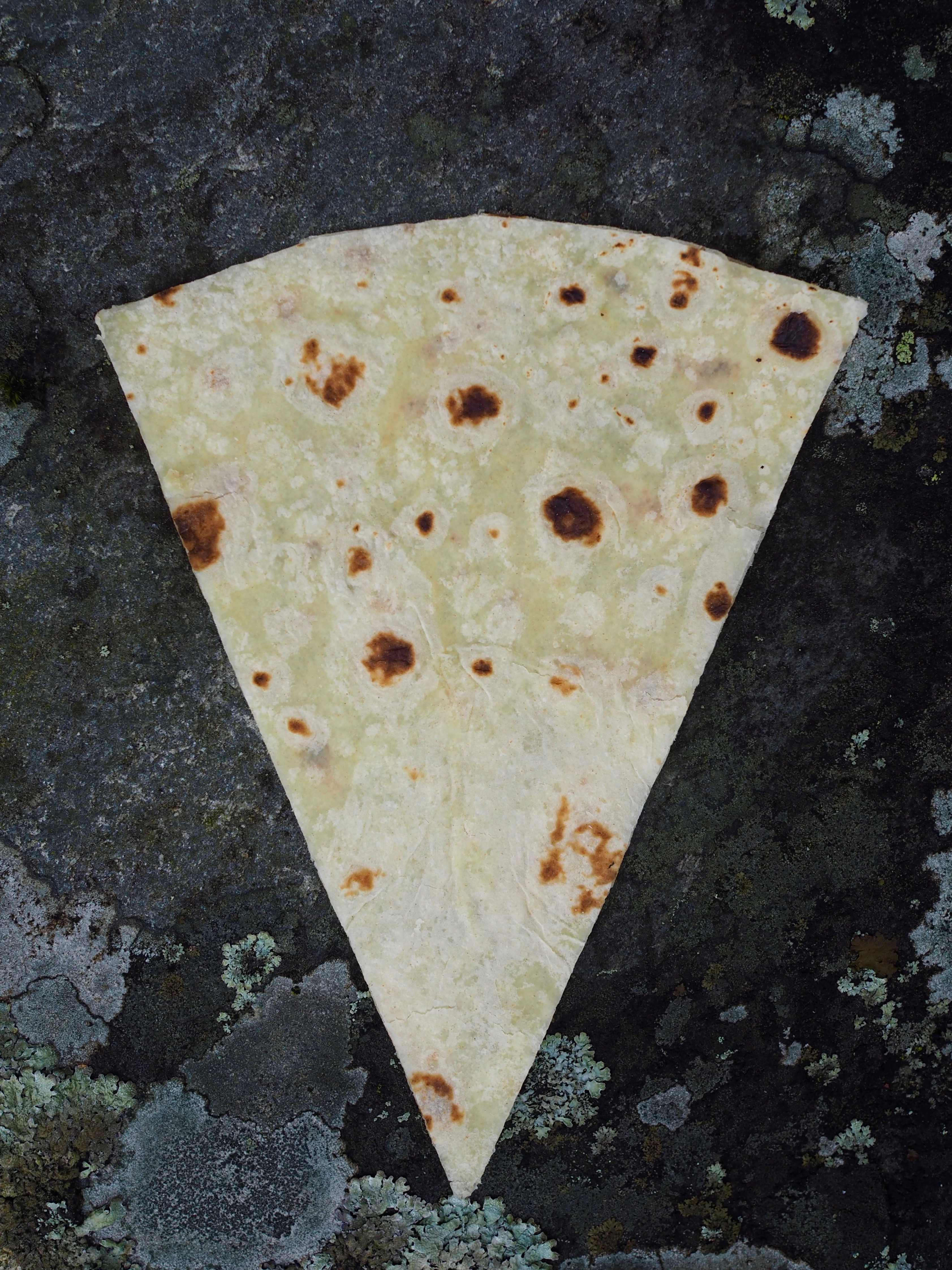

 The woods, blending well into the deep valley, are welcoming on this day. Edged against the great river, a short distance from the main road, and yet well hidden, lies the Medieval Forest. An emerging area dedicated to the preservation of history, culture, and traditional skills. A way to step back into time, learn authentic crafting and become more aware of nature and personal strength.
The woods, blending well into the deep valley, are welcoming on this day. Edged against the great river, a short distance from the main road, and yet well hidden, lies the Medieval Forest. An emerging area dedicated to the preservation of history, culture, and traditional skills. A way to step back into time, learn authentic crafting and become more aware of nature and personal strength.
It is here that I meet up with Kjell and Maj-Lis for a glimpse inside the eating habits of the Vikings. The husband and wife team are passionate about their country’s history and the area of Numedal. Every year, during July, they, and other enthusiasts, put on a week-long festival featuring local music, courses on textiles, leather, blacksmithing, archery (to name a few) and other festivities centered around the Middle Ages / Viking Age. The week’s festivities held in Stave churches and historical buildings, among other places, create an atmosphere true to Norway’s history for all ages and all types of interests. It’s an opportunity to step back into time – and even ride in a copy of a Viking ship from 850AD.
The valley, known as Numedal, is a glimpse into life during the Middle Ages. A place to experience how Norwegians once lived. Today, Numedal has named itself the Medieval Valley of Norway (Middelalderdalen). They can safely make such a proclamation because within the valley lies the largest remaining collection of houses and buildings older than 1537 AD. In Rollag, Nore og Uvdal municipalities, there are between 50-60 buildings including 4 stave churches, dating back to the 1100s. The predominance of so many medieval buildings still intact may be due, in part, to the wealth local people gained from the extraction of iron. They could then afford such high quality materials and craftsmen to build enduring structures. The valley has also acted as a pathway and crossroads for trading between the east and west for as far back as one could imagine. Knowledge, culture, religious beliefs and other outside influences most likely came through this area because of this important pathway. It also offered locals a way to barter and trade for what they could not produce.
And so here we are today, meeting at a crossroads, to delve into Norway’s past. Kjell starts a fire in-between the stone walls of the hand built oven. The dough has finished rising and a locally-caught trout lies on a wooden plank near the fire pit. We are making a small feast of plankefisk (plank fish) and rugbrød (rye bread with barley grains). Kjell is also showing me a fun way to cook eggs over an open fire. (more…)

 My visit to Slettastølen Seter introduced me to the Norwegian Seter Life, or mountain farm life. Sonja treated me to a banquet of homemade delights with various cheeses (including her recipe for farm cheese), fruit jams, and her homemade rømmegrøt made from her own sour cream using her cow’s milk.
My visit to Slettastølen Seter introduced me to the Norwegian Seter Life, or mountain farm life. Sonja treated me to a banquet of homemade delights with various cheeses (including her recipe for farm cheese), fruit jams, and her homemade rømmegrøt made from her own sour cream using her cow’s milk.







 My mother-in-law, Kari, makes one of the best cheesecakes (ostekaker) around. It’s her most requested dessert, and I, of course, was incredibly pleased when she shared with me the recipe on one of her latest visits so I could share it with you. It’s a fluffy and light variation on what can be quite a heavy dessert. Her recipe has a subtle touch of lemon and the base has a buttery, sweet and salty taste that literally melts in the mouth. It’s a variation that I have never come across before, being more accustomed to the American style of cheesecake. Yet, this is the genius of a recipe when it spans across countries and cultures and time. The ingredients are tweaked. The taste becomes accustomed. And the style is in the eye of the beholder. Variation. The spice of life. And what a sweet spice this is.
My mother-in-law, Kari, makes one of the best cheesecakes (ostekaker) around. It’s her most requested dessert, and I, of course, was incredibly pleased when she shared with me the recipe on one of her latest visits so I could share it with you. It’s a fluffy and light variation on what can be quite a heavy dessert. Her recipe has a subtle touch of lemon and the base has a buttery, sweet and salty taste that literally melts in the mouth. It’s a variation that I have never come across before, being more accustomed to the American style of cheesecake. Yet, this is the genius of a recipe when it spans across countries and cultures and time. The ingredients are tweaked. The taste becomes accustomed. And the style is in the eye of the beholder. Variation. The spice of life. And what a sweet spice this is.






 Sankthans, or Midsummer, is a celebration of both folklore and Christianity in Norway and across Scandinavia. An old tradition of celebrating the summer solstice which then blended into a newer tradition of commemorating the birth of John the Baptist. While in Norway the name still reflects the Christian view of the day (St Hans), it is the non-Christian elements, such as the midsummer bonfire, which has held fast over the years. And while less and less Norwegians celebrate this day, it still is seen as a welcome to the arrival of summer.
Sankthans, or Midsummer, is a celebration of both folklore and Christianity in Norway and across Scandinavia. An old tradition of celebrating the summer solstice which then blended into a newer tradition of commemorating the birth of John the Baptist. While in Norway the name still reflects the Christian view of the day (St Hans), it is the non-Christian elements, such as the midsummer bonfire, which has held fast over the years. And while less and less Norwegians celebrate this day, it still is seen as a welcome to the arrival of summer.

 My second visit to
My second visit to 
